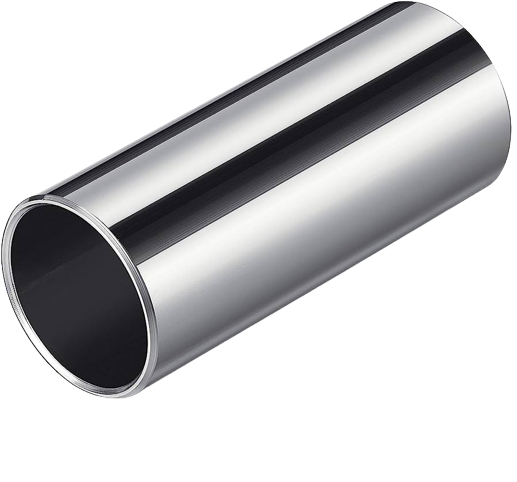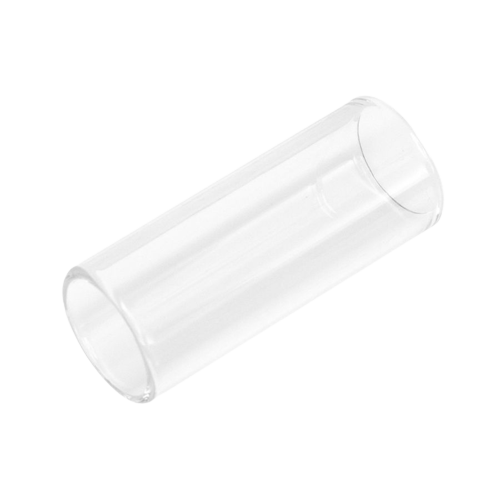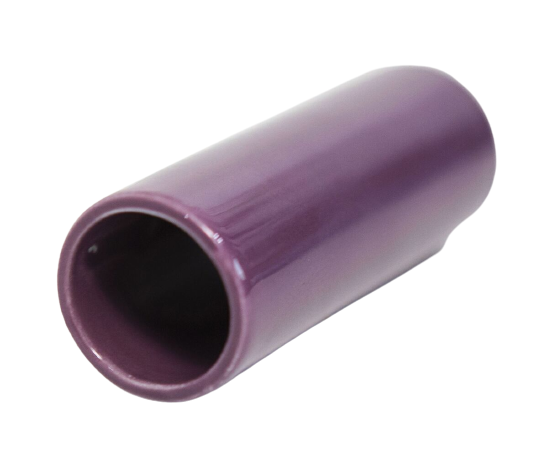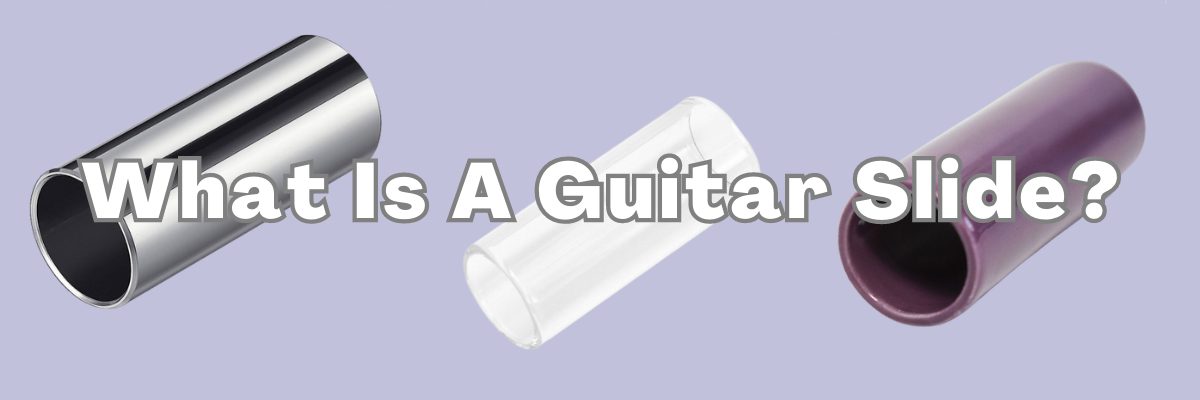What Is A Guitar Slide? A Beginner’s Guide to Understanding This Essential Accessory. If you’re a guitar enthusiast, you might have heard of a guitar slide.
Table of Contents

Hi there, music lovers! Ian here and welcome to this intriguing journey into the world of slide guitar.
Ever wondered how guitarists create those soulful, wailing sounds that seem to mimic the human voice? Well, hold onto your picks, because we’re about to unveil the secret weapon behind these mesmerizing melodies – the guitar slide.
Imagine a regular guitar, but instead of fretting notes with your fingers, you glide a smooth object, like a glass tube or a metal bar, across the strings. This magical tool, aptly named the guitar slide, transforms your instrument into a boundless playground of expressive sounds.
The allure of slide guitar lies in its ability to produce glissandos, those smooth, continuous transitions between notes, and vibratos, those quivering pitch bends that add a touch of emotion to your music. These techniques, when mastered, can evoke a range of emotions, from the heart-wrenching cries of blues to the exhilarating intensity of rock ‘n’ roll.
Slide guitar isn’t just about fancy techniques; it’s also about embracing a unique playing style. Unlike traditional fingerpicking, slide guitar often involves using a single finger to slide across the strings, creating a legato, seamless flow of notes. This approach adds a distinct character to your playing, setting you apart from the crowd.
If you’re ready to delve into the captivating world of slide guitar, there are plenty of resources to guide you along the way. Online tutorials, instructional books, and even workshops can provide you with the knowledge and techniques you need to master this expressive art form.
So, grab your guitar, pick up a slide, and let your fingers do the talking. Slide guitar is a journey of self-discovery, a chance to push the boundaries of your musical expression. Embark on this sonic adventure and unleash the soulful, wailing melodies that lie within your guitar.
Understanding the Guitar Slide
Understanding the guitar slide is crucial to mastering the art of slide guitar. A guitar slide is a small cylindrical or tube-shaped object that you wear on your finger. It’s typically made of glass, metal, or ceramic and is used to glide along the guitar strings.
The slide creates a continuous change in pitch, allowing you to achieve a glissando or vibrato sound. The sound produced by the slide is different from the sound produced by fretting the strings with your fingers or using a guitar pick.
If you’re new to playing the guitar, you may be wondering what a guitar slide is. A guitar slide, also known as a bottleneck or simply a slide, is a tool used to create a unique sound while playing the guitar.
Slides come in different materials, including glass, brass, and ceramic. The material you choose will affect the sound you produce. Glass slides are popular because they produce a warm, smooth tone. Brass slides are brighter and more metallic sounding, while ceramic slides produce a sharp, clear sound.
The size and weight of the slide are also important factors to consider. Slides come in different sizes to fit different fingers. The length of the slide determines how many frets you can cover. Shorter slides are easier to control, while longer slides allow you to cover more frets.
Slides can be cylindrical or in the shape of a steel bar. Cylinder slides are more common and are worn on the ring finger, while steel bar slides are held between the thumb and index finger.
When choosing a slide, you should also consider the durability of the material. Glass slides are fragile and can break easily, while metal slides are more durable. The ring size is also important, as a slide that is too loose or too tight can affect your playing.
In summary, a guitar slide is a tool used to create a unique sound while playing the guitar. Slides come in different materials, sizes, and weights, and the material you choose will affect the sound you produce. When choosing a slide, consider the durability of the material and the ring size to ensure a comfortable fit.
Types of Guitar Slides
When it comes to guitar slides, there are different types of materials that they can be made from. In this section, we will discuss the three most common types of guitar slides: metal, glass, and ceramic.
Metal Slide

A metal slide is a popular choice for guitarists who want a durable and versatile slide. Metal slides can be made from different types of metal, such as brass or steel. They are heavy and have a bright, metallic tone that can cut through a mix. Metal slides are also great for playing fast, intricate passages, as they are easy to control and can produce a lot of sustain.
Glass Slide

Glass guitar slides are another popular choice among guitarists. They are typically made from tempered glass or Pyrex, although in the early days, guitarists used glass medicine bottles, wine bottle necks, or even whole beer bottles!
Glass slides have a smooth, silky texture that allows for easy gliding across the strings. They produce a warm, smooth tone that is perfect for blues and country music. However, glass slides can be fragile and are prone to breaking if dropped.
Ceramic Slide

Ceramic guitar slides are a relatively new addition to the world of guitar slides. They are made from a type of ceramic material that is both durable and lightweight. Ceramic slides produce a warm, mellow tone that is similar to glass slides but with a bit more edge.
They are also less likely to break than glass slides, making them a great choice for guitarists who want a slide that is both durable and produces a great tone.
In summary, metal, glass, and ceramic slides are the most common types of guitar slides. Each type has its own unique characteristics and produces a different tone. When choosing a guitar slide, it’s important to consider the type of music you play and the sound you want to achieve.
The Art of Slide Guitar
If you’re interested in learning how to play slide guitar, there are some key techniques you’ll need to master. Slide guitar is a technique that involves using a hard object, such as a glass or metal slide, to play notes on the guitar. This technique can be used in a variety of genres, including blues, country, and rock.
Tuning
Before you start playing slide guitar, you’ll need to tune your guitar. There are a few different tunings you can use for slide guitar, including open tuning and standard tuning. Open tuning is a popular choice for slide guitar, as it allows you to play chords with just one finger. Open E tuning is a common tuning for slide guitar, and it involves tuning the guitar to E-B-E-G#-B-E.
Technique
Once you’ve tuned your guitar, it’s time to start playing. To play slide guitar, you’ll need to place the slide over the strings and slide it up and down the neck of the guitar. You can use your other fingers to play notes and chords, or you can use the slide to play melodies and solos.
One of the most important techniques in slide guitar is vibrato. Vibrato involves shaking the slide back and forth while holding it against the strings, which creates a wobbly, expressive sound. To achieve a good vibrato, you’ll need to practice moving the slide quickly and smoothly.
Tips for Playing Slide Guitar
Here are a few tips to help you get started with slide guitar:
- Start by playing simple melodies and solos, and gradually work your way up to more complex pieces.
- Experiment with different types of slides, such as glass, metal, and ceramic, to find the one that works best for you.
- Practice sliding up and down the neck of the guitar, and try to keep the slide in tune as you move between notes.
- Use your other fingers to mute the strings that you’re not playing, to prevent unwanted noise and feedback.
- Practice playing with a metronome or drum machine, to help you develop good timing and rhythm.
With a bit of practice and patience, you can master the art of slide guitar and add a new dimension to your playing.
Slide Guitar in Different Music Genres
The slide guitar technique is often used in blues music, but it is also found in other genres. Let’s take a look at how slide guitar is used in different music genres.
Blues Music
Slide guitar is an essential part of blues music. It is used to create a distinct sound that is often associated with the genre. Blues players often use open tunings to create a droning effect. They use the slide to move up and down the fretboard, creating a smooth, whining sound that is similar to the human voice. Some of the most famous blues players, such as Robert Johnson and Muddy Waters, used slide guitar in their music.
Rock Music
Slide guitar is not as common in rock music as it is in blues, but it is still used by some players. It is often used to create a unique sound in solos or to add a different texture to a song. In the 1970s, bands like Led Zeppelin and The Rolling Stones used slide guitar in some of their songs.
Country and Folk Music
Slide guitar is also used in country and folk music. It is often used to create a twangy sound that is associated with the genres. Country players often use the slide to play licks and solos. Folk players use it to create a unique sound that is different from traditional fingerpicking.
Bluegrass Music
Bluegrass music is known for its fast picking and intricate melodies. Slide guitar is not as common in bluegrass as it is in other genres, but some players use it to create a different sound. It is often used to play solos or to add a different texture to a song.
Electric Blues
Electric blues is a subgenre of blues that emerged in the 1940s. It is characterized by the use of electric guitars and amplifiers. Slide guitar is often used in electric blues to create a distorted sound that is different from traditional blues. Players often use the slide to create a feedback effect that adds to the overall sound of the song.
Overall, slide guitar is a versatile tool that can be used in many different music genres. Whether you’re playing blues, rock, country, folk, or bluegrass, the slide can add a unique texture to your music.
Famous Slide Guitar Players
If you’re interested in slide guitar, you’re in good company. Many famous guitarists have made a name for themselves playing slide guitar. Here are a few notable slide guitar players:
Ry Cooder
Ry Cooder is one of the most respected slide guitarists of his era. He often appeared for eye-popping slide moments on iconic records from the likes of Captain Beefheart, Rolling Stones, and Neil Young. Cooder is known for his unique style that incorporates elements of blues, country, and folk music.
Bonnie Raitt
Bonnie Raitt is a singer, songwriter, and slide guitarist who has been active since the 1970s. She has won multiple Grammy awards and is known for her soulful voice and bluesy slide guitar playing. Raitt has cited artists such as Robert Johnson and Mississippi Fred McDowell as influences.
Elmore James
Elmore James was a blues guitarist who was active in the 1950s and 1960s. He is known for his distinctive slide guitar playing and his use of the electric guitar. James was a major influence on many later slide guitarists, including Duane Allman and Derek Trucks.
Blind Willie Johnson
Blind Willie Johnson was a gospel blues singer and slide guitarist who was active in the 1920s and 1930s. He is known for his powerful voice and his use of the slide guitar. Johnson’s music has been covered by many artists, including Led Zeppelin and Eric Clapton.
These are just a few examples of the many famous slide guitar players out there. Whether you’re a fan of blues, rock, or country music, there’s sure to be a slide guitarist out there who will inspire you.
Slide Guitar Techniques
If you want to play slide guitar, you must learn some essential techniques. In this section, we’ll cover the three main techniques: Glissando, Vibrato, and Muting.
Glissando
Glissando is a technique that involves sliding the slide finger along the fretboard. This technique allows you to play smooth, continuous notes and create interesting pitch changes. To perform glissando, place the slide finger on the string and slide it up or down the fretboard. Make sure you apply enough pressure to the string to produce a clear, bright sound.
Vibrato
Vibrato is a technique that adds a wobbling effect to the notes. It involves moving the slide finger back and forth while maintaining pressure on the string. This technique creates a beautiful, expressive sound that can add depth to your playing. To perform vibrato, place the slide finger on the string and move it back and forth while maintaining pressure on the string.
Muting
Muting is a technique that allows you to control the sound of the guitar. It involves using the fretting hand to mute the strings while playing. This technique allows you to create staccato notes and control the length of the notes. To perform muting, place the fretting hand on the strings and apply pressure to mute the strings while playing.
These three techniques are essential for playing slide guitar. By mastering these techniques, you can create beautiful, expressive music. Remember to practice regularly and experiment with different chords and tunings to find your unique sound.
Choosing the Right Slide for Your Guitar
When it comes to choosing the right guitar slide, there are several factors to consider. The right slide can make all the difference in your playing, so it’s important to choose one that suits your playing style and preferences.
Materials
Slides come in a variety of materials, including glass, brass, ceramic, and steel. Each material has its own unique characteristics that affect the sound and feel of the slide. Glass slides are popular for their smooth, warm tone, while brass slides are known for their bright, cutting sound. Ceramic slides offer a balanced tone, and steel slides are durable and long-lasting.
Size
Choosing the right size slide is crucial for comfortable playing. A slide that is too small will feel tight and restrict your playing, while a slide that is too large will slip off your finger and affect your control. To find the right size, measure the diameter of your ring finger and choose a slightly larger slide.
Length
The length of your slide will affect the range of notes you can play. A shorter slide will allow you to play higher notes with greater accuracy, while a longer slide will give you a wider range of notes to work with. Consider the type of music you play and choose a slide that suits your needs.
Weight
The weight of your slide will affect the tone and feel of your playing. Heavier slides will produce a thicker, more resonant sound, while lighter slides will produce a brighter, more delicate tone. Experiment with different weights to find the right balance for your playing style.
Slide Finger
Finally, consider which finger you will use to play the slide. Many guitarists prefer to use their ring finger, as it allows for greater control and flexibility. However, some players may prefer to use their pinky or middle finger, depending on their playing style.
In summary, choosing the right guitar slide requires careful consideration of materials, size, length, weight, and slide finger. Experiment with different options to find the slide that suits your playing style and preferences.
Slide Guitar Tunings
When it comes to playing slide guitar, the tuning you use can greatly affect the sound you produce. There are various tunings that you can experiment with to find the one that suits your style. Here are some popular slide guitar tunings:
Open Tunings
Open tunings are when you tune the guitar to a chord, allowing you to play a full chord just by strumming all the strings. Open tunings are commonly used in slide guitar playing, as they allow for more complex chord progressions and easier slide playing. Some popular open tunings for slide guitar include:
- Open E: E-B-E-G#-B-E
- Open G: D-G-D-G-B-D
- Open D: D-A-D-F#-A-D
- Open A: E-A-E-A-C#-E
Standard Tuning
While open tunings are popular in slide guitar playing, you can also play slide in standard tuning. This allows you to focus on the touch and articulation of your fret hand and pick hand without having to re-learn the fretboard and chord forms in an alternate tuning. To play slide in standard tuning, you can simply slide up and down the fretboard on a single string.
Intonation
When playing slide guitar, it’s important to pay attention to your intonation. Intonation refers to the accuracy of your pitch, and can greatly affect the sound you produce. To ensure good intonation, you should make sure to press the slide firmly against the fret, without pressing down too hard. You can also experiment with different finger placements to find the sweet spot for each note.
Conclusion
Experimenting with different slide guitar tunings can help you find the sound that suits your style. Whether you choose to use open tunings or standard tuning, make sure to pay attention to your intonation for the best sound possible.
Additional Considerations for Slide Guitar
When playing slide guitar, there are some additional considerations to keep in mind beyond just choosing the right slide. These factors can impact the sound and feel of your playing, so it’s important to take them into account.
Sustain and Warmth
One of the benefits of using a slide is the ability to create long, sustained notes. However, the type of slide you use can impact the sustain and warmth of your sound. Glass slides, for example, tend to produce a warmer tone with more sustain, while metal slides can sound brighter and more cutting.
Tone and Volume
The thickness of your slide can also impact the tone and volume of your playing. Thicker slides tend to produce a fuller, more resonant sound with more volume, while thinner slides can sound brighter and more focused.
Resonator Guitars
If you’re playing slide guitar on a resonator guitar, there are a few additional factors to consider. The type of resonator, the placement of the slide, and the angle of the slide can all impact the sound and feel of your playing. Experiment with different techniques to find the right balance for your playing style.
Wall Thickness
The thickness of the guitar’s walls can also impact the sound and feel of your playing. Thinner walls tend to produce a brighter, more focused sound, while thicker walls can sound warmer and more resonant.
Inspiration
Finally, don’t forget to draw inspiration from other slide guitar players. Listen to recordings, watch live performances, and experiment with different techniques to find your unique style. With time and practice, you’ll be able to create your own signature sound on the slide guitar.
Slide Guitar in Popular Songs
If you’re a fan of blues, rock, or country music, you’ve probably heard slide guitar in some of your favourite songs. Here are some popular songs that feature slide guitar:
- “Brown Sugar” by The Rolling Stones: Keith Richards uses a slide guitar to create the iconic riff in this classic rock song. The slide adds a gritty, bluesy feel to the track.
- “Layla” by Eric Clapton: The famous riff in this song is played on a bottleneck guitar, which is a type of slide guitar. Clapton’s use of the slide gives the song a haunting, melancholy quality.
- “Statesboro Blues” by The Allman Brothers Band: Duane Allman’s slide guitar playing is front and centre in this blues classic. The song features a driving rhythm and Allman’s soulful, expressive slide guitar work.
- “Walking Blues” by Robert Johnson: This blues standard has been covered by countless musicians over the years, and many versions feature slide guitar. Johnson’s original recording features his signature slide playing, which adds to the song’s mournful tone.
Slide guitar can be a challenging technique to master, but it’s worth the effort for the unique sounds it can produce. Whether you’re playing blues, rock, or country, adding a slide to your guitar playing can help you create a distinctive sound that will set you apart from other musicians.
Frequently Asked Questions
What are some alternatives to using a traditional guitar slide?
If you don’t have a traditional guitar slide, you can use a variety of household objects as a substitute. Some common alternatives include glass medicine bottles, metal pipes, and even old spark plugs. Just be sure to choose something that is smooth and won’t scratch your guitar’s strings.
How do you play slide guitar on an acoustic guitar?
To play slide guitar on an acoustic guitar, you’ll need to raise the strings higher off the fretboard to prevent buzzing. This is known as “action.” You can adjust the action on your guitar by using a truss rod or by adding a shim to the saddle. Once you have the right action, you can use a traditional guitar slide or an alternative object to create a glissando or vibrato sound.
What is the meaning of ‘slide’ in the context of playing guitar?
In the context of playing guitar, ‘slide’ refers to a technique where the player uses a smooth object, such as a guitar slide or a bottleneck, to glide up and down the guitar strings. This creates a continuous change in pitch, creating a unique sound effect. Slide guitar is commonly used in blues, country, and rock music.
Is it necessary to use a guitar slide when playing slide guitar in country music?
While guitar slides are commonly used in slide guitar playing, they are not always necessary. In country music, players often use a technique called “chicken pickin'” to create a similar sound effect. This involves using the fingers to pluck the strings while simultaneously sliding up and down the fretboard. However, using a guitar slide can still be a useful tool for creating a distinctive sound.
